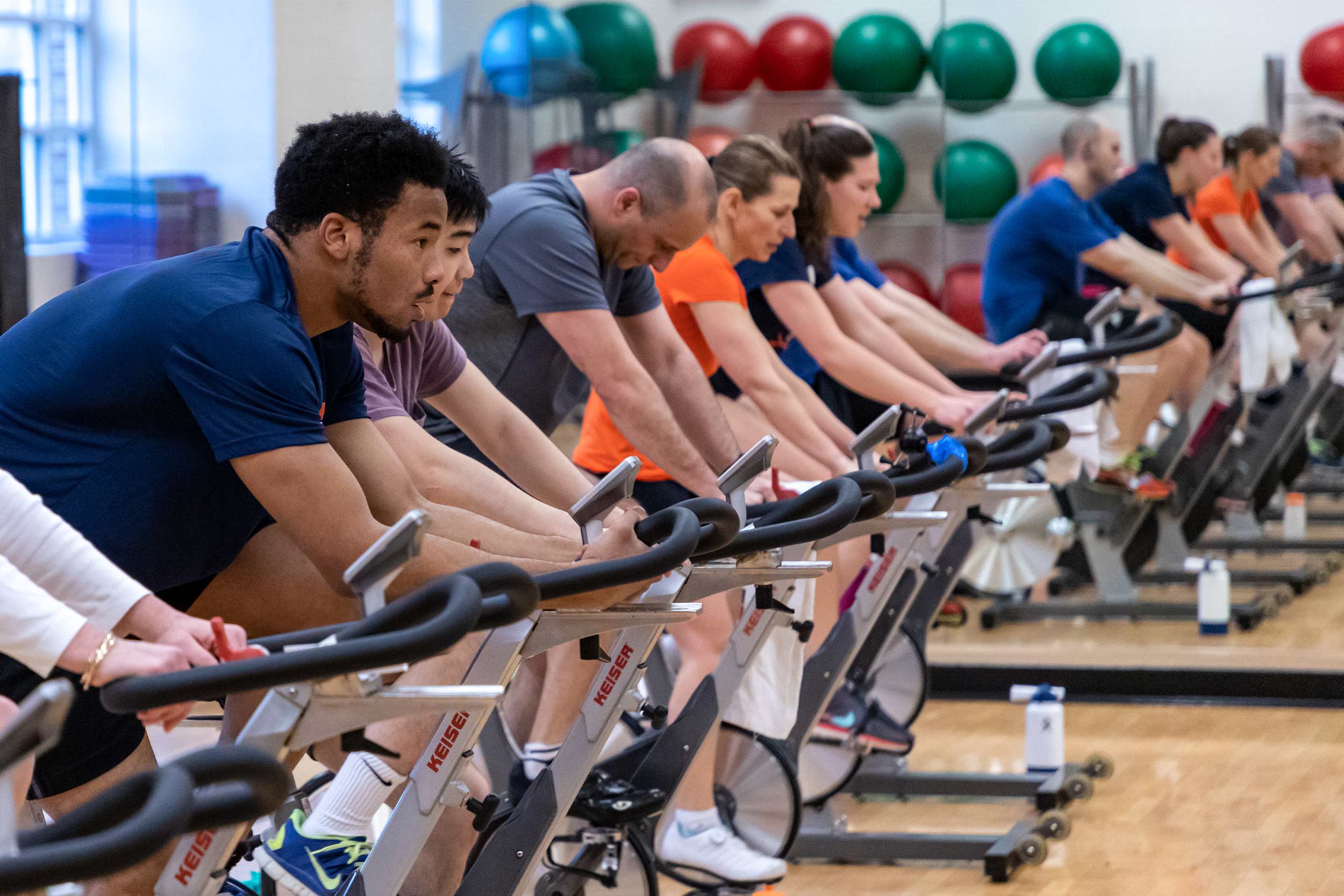Q. What were the popular group fitness offerings when this expo was launched 30 years ago?
A. The 1990s saw an explosion of exercise formats, including step classes, TaeBo (a combination of high-intensity cardio, martial arts and hip-hop moves), and the launch of indoor cycling, among others. “Aerobics” schedules had many varieties of step classes such as step-and-strength, double step, super step, step circuits and more. Class formats, then and now, focus on the same foundational ideas: fun and energizing workouts that get the blood pumping and build a sense of community and camaraderie.
Q. What’s popular today?
A. Many of today’s formats are simply re-invented or rebranded versions with more equipment options available and the integration of technology. High-intensity interval training remains popular. These classes have been called HIIT, boot camp, sports conditioning and many other combination names over the years, but they are fundamentally the same – alternating high-intensity exercises with less-intense movements, balancing hard work with active recovery. Strength-based classes using equipment and body weight as well as indoor cycle also remain popular today at UVA, which aligns with current world trends.
Q. What are some of the fitness approaches today that weren’t around then?
A. Product and equipment development for homes and commercial venues lead the growth and offer variety to traditional exercises. For example, doing a squat on a “Bosu” ball versus on the floor holding dumbbells incorporates balance elements, making the movement more challenging. Resistance bands, barbells, kettlebells, medicine balls, disc sliders and foam rollers are some of the many tools available today to adjust traditional movements. This helps challenge muscles differently and prevent exercise burnout.
The evolution of technology enables interactive experiences that are live or virtual, including real-time statistics to assess progress, sound and lighting enhancements during the classes as well as registration and communication capabilities for the participants and the instructors.
Q. What are some ways that serving fitness and wellness needs have changed?
A. It is fully realized that exercise is preventative medicine and an integral part of one’s total wellness. There is better understanding that exercise is anything that moves, strengthens and stretches the body for an extended period of time most days of the week. It is now expected that individuals leading exercise for groups or individuals are educated, trained and certified to lead people through fitness activities. These individuals work with multi-disciplinary teams to help people balance all dimensions of wellness, not just exercise and the physical dimension alone.
Q. What hasn’t changed?
A. The concept of moving to music using body weight or equipment has always been a popular choice of exercise, but the style of the class can vary greatly. Class formats continue to be repackaged and rebranded by changing one or more elements and presented as “new.” Jazzercise was the pioneer of integrating dance and exercise movements in 1969, and in the 1990s, Zumba was born, which integrates Latin dance styles. Both formats are still popular.
Q. Is it easier to get and stay fit today compared to 30 years ago?
A. If you do not grow up in a family that is active, it can be intimidating to get started, but the options today far exceed what existed 30 years ago. Convenience and time continue to be the top barriers to exercise for individuals and many classes and programs offer options for “express” workouts to minimize this barrier.
Exercise options have never been as plentiful as they are now, but the fundamentals have not changed: We need a combination of cardio, strength and flexibility training each week for a minimum of 150 minutes to decrease disease risk. There are endless possibilities, but people gravitate to what they enjoy doing and who they enjoy doing it with, whether it is trending today or many years ago.






